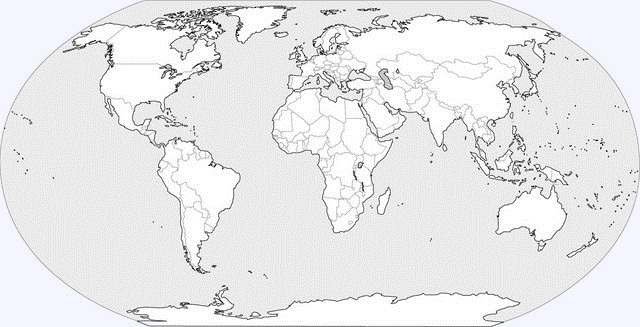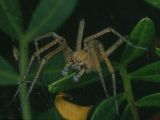|
Nombre común en ingles:
Cork-lid trapdoor spiders
Nombre común en castellano:
Se desconoce
Familias similares:
Género tipo:
Cteniza Latreille, 1829
Diagnosis:
Medium-sized to very large
mygalomorph spiders; three tarsal claws; eight eyes; rastellum
present; four spinnerets; distal segments of front legs with lateral
bands of short, thorn-like spines in female; cheliceral furrow with
two rows of strong teeth; carapace with strongly procurved fovea.
Caracteres descriptivos:
Caparazón: arched; glabrous; fovea strongly
procurved. Esternón: triangular; two sigilla, posterior sigilla
large and deep or indistinct and shallow. Ojos: eight; arranged in short eye group of two or
three rows; anterior row usually procurved; eye tubercle
absent or low. Quelíceros: rastellum distinct, consisting of thick
spines; cheliceral furrow biserially dentate; fang with
outer surface smooth. Piezas bucales: labium wider than long, with a few
cuspules; endites rectangular or with anterior lobe
pronounced, with few to numerous cuspules; serrula absent.
Patas: three claws; short legs; spinose distally on
legs I and II; paired claw in female with one long tooth and
two smaller teeth, a third claw curved and bare; tibia III
cylindrical, with dorsal saddle-shaped depression
(Pachylomerinae); distal segments of legs I and II with
lateral bands of short, thorn-like spines in female;
scopulae absent on tarsi in females; present on all tarsi of
males. Palpo femenino: unmodified. Abdomen: oval; covered with a thin layer of short
setae. Hileras: four; apical segment of posterior spinnerets
domed. Sistema respiratorio: cuatro filotráqueas. Genitalia: spermathecae multilobular; male palp
simple; bulbus with pyriform conical distal sclerite; second
haematodocha small. Tamaño corporal: 13-43 mm. Color: varies from brown to reddish black with legs
yellowish brown or reddish brown; abdomen usually a pallid
or dull colour.
Estatus taxonómico:
Ctenizidae is the only family in the superfamily Ctenizoidina, which
forms, together with the superfamily Migoidea (Migidae +
Actinopodidae), the sister taxon of the Idiopidae (Raven, 1985).
They fall into a division of the Rastelloidina, which also contains
the Cyrtaucheniidae. A key to the genera or the world is provided by
Raven (1985). Few genera have recently been revised (Decae, 1996).
Distribución: In most of
the tropical and subtropical regions of the world.

Estilo de vida: Live
permanently in silk-lined burrows usually closed with a cork-lid
trapdoor; some are arboreal (Main, 1985).
Bibliografía:
-
Bond, J.A. & Hendrixson, B.E. 2005. Ctenizidae. pp. 43-44 in Ubick,
D., Paquin, P., Cushing, P.E. & Roth, V. (Eds) 2005. The Spiders of
North America. An Identification Manual. American Arachnological
Society.
-
Decae, A.E. 1996. Systematics of the trapdoor spider genus
Cyrtocarenum Ausserer, 1871 (Araneae, Ctenizidae). Bull. Br.
arachnol. Soc. 10: 161-170.
-
Dippenaar-Schoeman, A.S. & Jocqué, R. 1997. African
Spiders: An Identification Manual. Plant Protection Res.
Inst. Handbook, no. 9, Pretoria, 392 pp.
-
Dippenaar- Schoeman, A.S.
2002. Baboon and trapdoor spiders of southern Africa: An
identification manual. Plant Protection Res. Inst. Handbook,
no. 13, Agricultural Research Council, Pretoria, 128 pp.
-
Main, B.Y. 1985. Further studies on the systematics of ctenizid
trapdoor spiders: A review of the Australian genera (Araneae:
Mygalomorphae: Ctenizidae). Aust. J. Zool. (suppl. Ser.) 108: 1-84.
-
Raven, R.J.
1985. The spider infraorder Mygalomorphae (Araneae):
Cladistics and systematics. Bull. Am. Mus. Nat. Hist. 182: 1-180.
1 género y 2 especies presentes en la Península Ibérica:
|
| |
- U. algarve
Decae, 2010 |
| |
- U. picea
Thorell, 1875 |
| |
|
 |